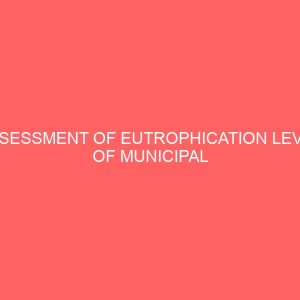Description
CHAPTER ONE INTRODUCTION Tuberculosis (TB) is an infectious disease that primarily affects lungs causing pulmonary tuberculosis but can also affect meninges, intestine, bones, lymph nodes, skin and other tissues of the body. Worldwide, tuberculosis causes 2.9 million deaths annually (WHO, 1998). An estimated two billion persons are currently infected with Mycobacterium tuberculosis and other Mycobacterium species. The rates of increase are even greater in developing countries, primarily because of increased immigration of people from regions of high endemicity, declining socio-economic conditions in densely populated cities and the increasing number of human immunodeficiency virus (HIV) infected individuals (Szabo, 1990). The total number of tuberculosis cases in the world is increasing and the HIV epidemic is implicated for this increased incidence and an estimated three million persons with tuberculosis worldwide also have AIDS. Over 125 Mycobacterium species have been characterized and identified (Griffith et al, 2007). There are numerous species of Mycobacterium and because of recently developed molecular methods, more are being recognized (Tortoli, 2003), although regional variation in species isolation has been shown (Griffith et al, 2007). Historically M. tuberculosis and M. leprae have caused the preponderance of human disease. However in recent years, other mycobacteria have become more widely appreciated as potential pathogens. Most other mycobacteria are present in the environment as saprophytes. These organisms in the past have been called atypical mycobacteria, the term first coined by Pinner (1935) but species have been described with different nomenclatures such as anonymous, nontuberculous mycobacteria (NTM), environmental, opportunistic and mycobacteria other than tubercle bacilli (MOTT). While there has not been an international consensus on the nomenclature, the American Thoracic Society (ATS) has endorsed the name NTM (Wallace et al, 1990; Katoch and Mohan, 2001). The frequency of pulmonary disease from nontuberculous mycobacteria (NTM) is reportedly on the rise in Europe, North America, Asia and Southern Africa (Marras and Daley, 2002). In sub-Saharan Africa, information on the extent of the burden of pulmonary disease from nontuberculous mycobacteria (NTM) is lacking due to limitations in tools for mycobacterial species identification. However, studies conducted as far back as the late 1950s and early 1960s using traditional tools for identifying mycobacterial groups based on certain characteristics like speed of growth and morphology, have reported the isolation of NTM from both tuberculosis patients and the general public in some African countries including Nigeria (Zykov et al, 1967; Zykov and Roulet, 1967). They have been increasingly recognized to cause pulmonary and non pulmonary infections (Pinner, 1935; Wolinsky, 1979; Good, 1985; Smith and Grange, 1989; Wayne and Sramek, 1992), which is in part explained by th







